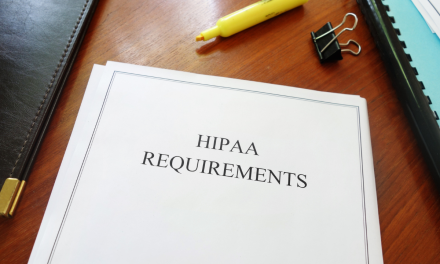
Medicare Comparative Billing May Provide Important Feedback

Recently, many chiropractors received a Comparative Billing Report from Medicare. The report compared the billing patterns of the doctor to that of their peers in their state and nationwide. Many believe that the timing of the information, along with the announcement of Medicare beginning audits, is no coincidence. Regardless, audits are a fact of life. The responsibility to document the rationale for care is required for every physician.
The world was turned upside down by the COVID pandemic. However, nothing can match the upheaval of an audit and ensuing request to pay back massive amounts of money. Many have sought to opt-out of Medicare altogether, but Medicare instructs us that, “Opting out of Medicare is not an option for Doctors of Chiropractic.”1
Running a successful chiropractic office requires a clear understanding of the requirements to prove the medical necessity of the care we render, under not only in Medicare but in all types of insurance.. Even for self-pay patients, doctors must similarly document their rationale for care to meet professional standard of care requirements.
Medical necessity rationale requires more than one approach. Medicare Medical Necessity is satisfied through several avenues, all at the same time. These are as follows:
- An Initial Visit Report
- Initial Examination
- Clear Objective Treatment Goals
- P.A.R.T. Guidelines (Pain, Alignment, Range of Motion, Tissue/Tone changes)
- S.O.A.P. Method of Documentation (Subjective, Objective, Assessment and Plan)
- O.A.T.S. (Outcome Assessment Tests)
Initial Visit Report
In Medicare, an Initial Visit Report (IVR) is required whether the subluxation is determined by x-ray or examination. The IVR establishes the history, findings, diagnosis, and treatment plan for the case. The initial report demonstrates the need for care, the presence of the subluxation, and the cause of the subluxation.
Initial Examination
The Initial Examination confirms the diagnosis and, therefore, the treatment and the prognosis. The examination should comprise of the following:
- Orthopedic tests
- Palpation findings
- Pinprick sensitivity tests
- Reflexes
- Range of Motion – Give plane and degrees to be referenced later to show progress. The more specific the degrees, the better. Note pain.
- Muscle strength
- Outcome Questionnaires
P.A.R.T.
When it comes down to it, think of Medicare chiropractic coverage as “traditional” chiropractic care. To establish Medical Necessity, a subluxation of the spine has to be present. The establishment of the segmental and somatic dysfunction is accomplished through P.A.R.T. Pain, alignment, range of motion, and tissue tone changes such as spasms or edema proves that the subluxation is present at a particular segmental location. P.A.R.T. has to be segmental specific.
Outcome Assessment Tests (O.A.TS)
All carriers are looking for functional improvement. That is pretty convenient since that is what we do as chiropractors. When we talk about function, for the most part, we are talking about Activities of Daily Living (ADLs). The objective measurement of ADL deficiency is through O.A.TS. I recommend doing this for all patients initially and every 30 days while under active care. Even in the case of a chronic subluxation such as degenerative disc disease, the treatment is considered active care as long as the therapy can be expected to result in some functional improvement. Once the functional status has remained stable, further treatment is considered maintenance care. As you can see, the improvement of function is a crucial factor.
Assessment
Lastly, the assessment is the area where the doctor gives their professional opinion on the progress of the case. The new evaluation and management guidelines of 2021 indicate that medical decision making is the key element in most evaluation and management services. Time may be a secondary consideration. I always recommend that you answer the questions “How is the patient improved?” and “Why do they still need care?” for every region you are treating every visit.
The dreaded audit is inevitable. Practices that rely at all on insurance reimbursement should document the medical necessity of care, because it is a valuable risk management strategy. By adequately writing the medical necessity of your care, in the event of a denial, you have an improved chance of winning an appeal. Investing the time to document your care correctly will protect your practice against recoupment proceedings in the future.
1. Medlearn Matters SE0479, “Opting Out of Medicare.”

















